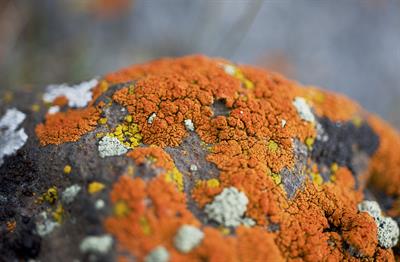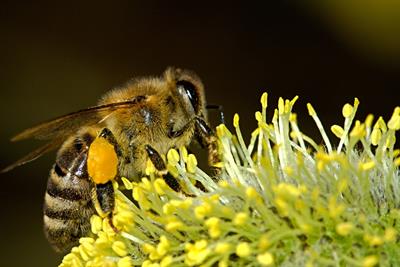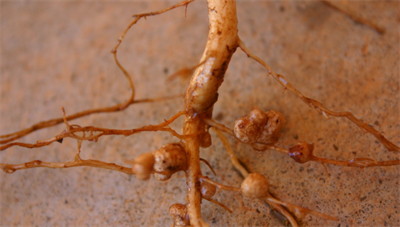
PUMPA - SMART LEARNING
எங்கள் ஆசிரியர்களுடன் 1-ஆன்-1 ஆலோசனை நேரத்தைப் பெறுங்கள். டாப்பர் ஆவதற்கு நாங்கள் பயிற்சி அளிப்போம்
Book Free DemoSymbiosis is derived from the Greek words 'Sym' means 'with' and 'biosis' means 'living', which means living together.
If two different types of organisms live and work together for their mutual benefit, their relationship is called symbiosis.
In a symbiotic relationship, organisms share their shelter and nutrients among them. A certain type of fungi that live inside the plant's roots provide water and nutrients to the plant, and the fungi also obtain certain nutrients from the plant.

Lichens
Video explaining about the lichens
Example 1: Lichens
Lichens are an association of alga and fungus living together for their mutual benefits. The fungus provides water, minerals and shelter required by the alga. In return, algae provides food to the fungus.
Note: In alga, the presence of chlorophyll pigment enables it to prepare its food by photosynthesis.

Bee eating a nectar from the flower
Example 2: Relation between bee and a flower
The bee helps the plants to pollinate. Pollen grains are transferred from one flower to another flower with the help of bees. Thus bees help in asexual reproduction in plants. In return, the flower provided nectar to the bee.

Nodules of the leguminous plant
Example 3: Rhizobium bacteria and leguminous plants
In leguminous plants, absorption of nitrogen is facilitated by rhizobium bacteria. This bacteria lives in the root nodules of leguminous plants. It converts gaseous nitrogen into a usable form and release it into the soil. Plants absorb this nitrogen in the soil for their growth. In return, rhizobium bacteria gets their food and shelter from the plant.
Reference:
https://pixabay.com/photos/lichen-orange-moss-stone-grey-5323493/
https://pixabay.com/photos/bee-insect-nectar-honey-bee-animal-18192/